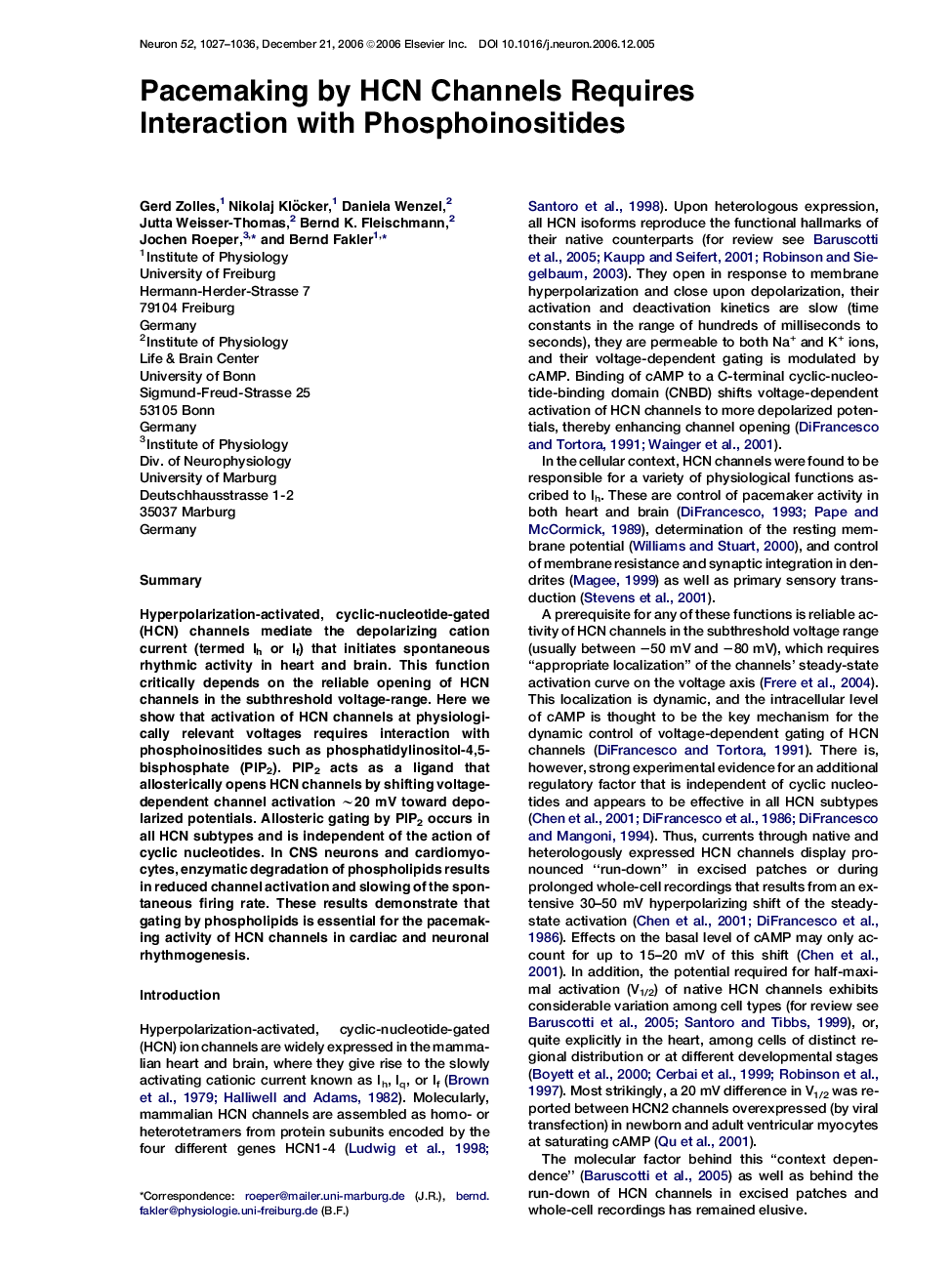| Article ID | Journal | Published Year | Pages | File Type |
|---|---|---|---|---|
| 4323026 | Neuron | 2006 | 10 Pages |
SummaryHyperpolarization-activated, cyclic-nucleotide-gated (HCN) channels mediate the depolarizing cation current (termed Ih or If) that initiates spontaneous rhythmic activity in heart and brain. This function critically depends on the reliable opening of HCN channels in the subthreshold voltage-range. Here we show that activation of HCN channels at physiologically relevant voltages requires interaction with phosphoinositides such as phosphatidylinositol-4,5-bisphosphate (PIP2). PIP2 acts as a ligand that allosterically opens HCN channels by shifting voltage-dependent channel activation ∼20 mV toward depolarized potentials. Allosteric gating by PIP2 occurs in all HCN subtypes and is independent of the action of cyclic nucleotides. In CNS neurons and cardiomyocytes, enzymatic degradation of phospholipids results in reduced channel activation and slowing of the spontaneous firing rate. These results demonstrate that gating by phospholipids is essential for the pacemaking activity of HCN channels in cardiac and neuronal rhythmogenesis.
